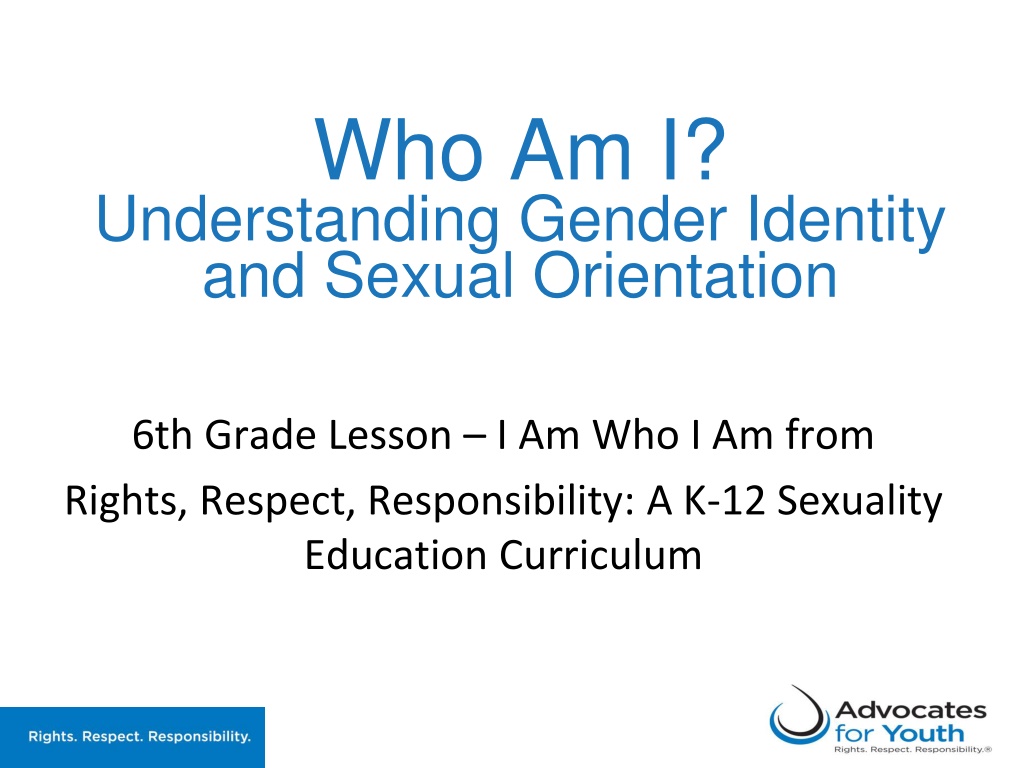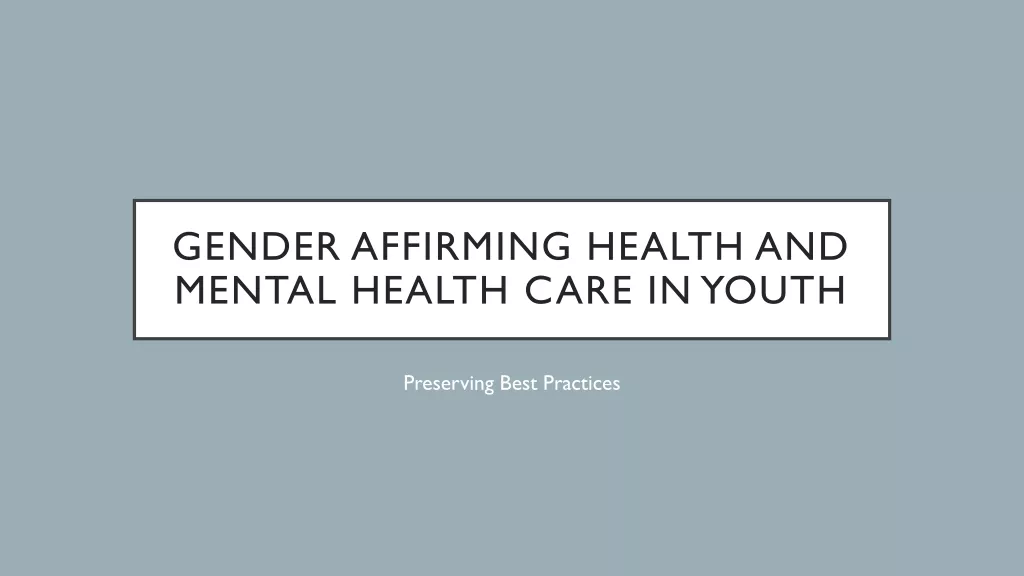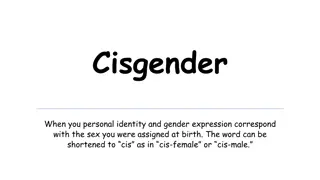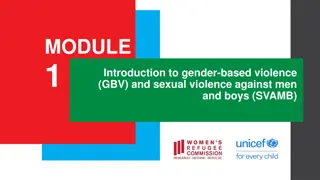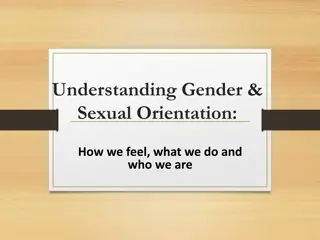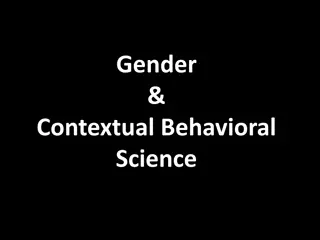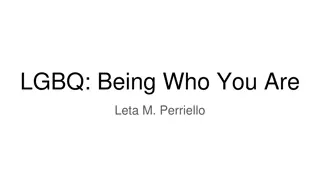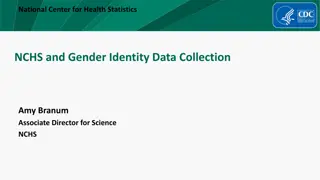Understanding Gender Identity and Sexual Orientation in 6th Grade
Explore the concepts of gender, body parts, chromosomes, and societal expectations in relation to gender identity and expression. Learn about the diversity of gender identities and the importance of respecting individual self-identifications. Understand the distinction between gender identity, gender expression, and sexual orientation in a comprehensive sexuality education curriculum.
Download Presentation

Please find below an Image/Link to download the presentation.
The content on the website is provided AS IS for your information and personal use only. It may not be sold, licensed, or shared on other websites without obtaining consent from the author. Download presentation by click this link. If you encounter any issues during the download, it is possible that the publisher has removed the file from their server.
E N D
Presentation Transcript
Who Am I? Understanding Gender Identity and Sexual Orientation 6th Grade Lesson I Am Who I Am from Rights, Respect, Responsibility: A K-12 Sexuality Education Curriculum
What is Gender? Combination of our body parts and chromosomes and how we feel about having both. There s a social element, too will often be treated differently based on our gender (real or perceived).
Boys and Girls Someone who s born with: Someone who s born with: A vulva Ovaries XX chromosomes A penis Testicles XY chromosomes is usually called a girl is usually called a boy
For Example If someone s called a boy If someone s called a girl What toys is she given to play with? What toys is he given to play with? What clothes is she given to wear? What clothes is he given to wear? How is she expected to behave? How is he expected to behave?
Inside vs. Outside USUALLY, a person s inner feelings match their body parts They see they have a vulva, and think, I m female OR They see they have a penis, and think, I m male
But Not Always For some people, how they feel on the inside doesn t match their sexual body parts. Maybe they have a penis but do not feel they are male. The name for this is transgender or just trans.
Gender Identity vs. Expression A person s gender identity is what they call themselves: Male, female, transgender, etc. It doesn t matter what other people call them, how they feel on the inside is what s most important.
Gender Identity vs. Expression A person s gender expression is how they let people know the gender they are. That can be by the name they use, the clothes they wear, the pronouns (he, she, they) they use, how they carry themselves, etc.
All of This is Different From Sexual Orientation
What is Sexual Orientation? The gender(s) of the people to whom we are attracted, physically and romantically
What is Sexual Orientation? The gender(s) of the people to whom we are attracted, physically and romantically. Two things of note: May include more than one gender Includes romantic love: you can know your orientation (who you re attracted to and/or could fall in love with) without necessarily doing something sexual with another person
Current Categories for Sexual Orientation Heterosexual Queer (Careful!) Lesbian or Gay Others? Bisexual
